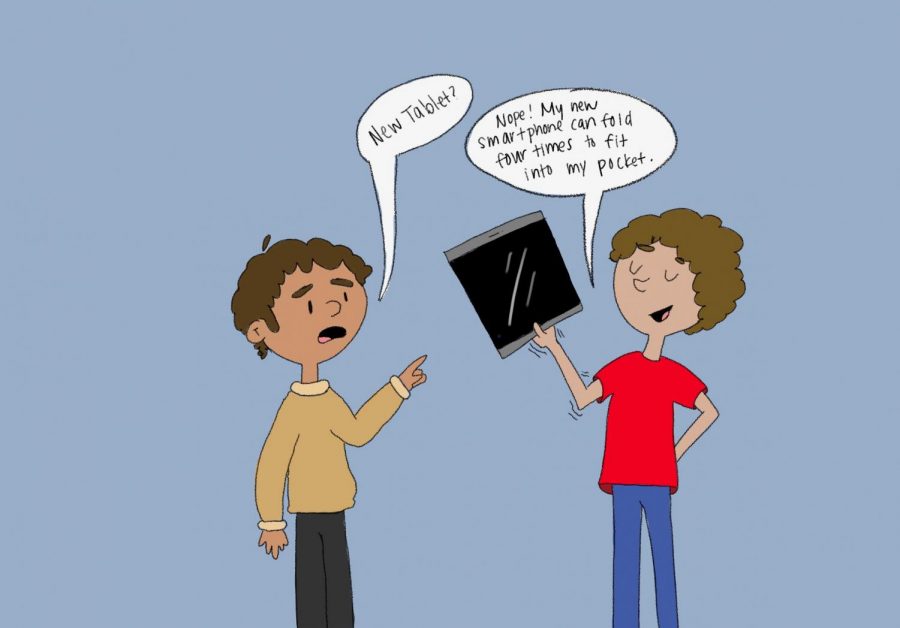Manufacturers Must Avoid Mindless Expansion With Foldable Phones
With a screen size of 8 inches, the Huawei Mate X is larger than an Apple iPad mini, but the flexible display technology it utilizes allows it to brand itself as a phone. While the ability to reduce its physical footprint is impressive, manufacturers are using new technology to bend the definition of a smartphone to unnecessary proportions.
In the past three years, flexible display technology has evolved to the consumer stage, making use of new organic light-emitting diode (OLED) screens to create a hybrid between the now-common touchscreen smartphones and traditional folding ones while maintaining high-resolution and function.
Foldable smartphones, while decreasing the physical footprint and occupying less space than the average smartphone, is an exciting and innovative advancement in mobile technology. However, the folding phone proves to be practical only when condensing a normal sized smartphone; when it comes to fitting these tablet-sized devices into the size and shape of a smartphone, convenience, practicality and budget-friendliness are often sacrificed.
Ever since Samsung’s release of the first mainstream “foldable smartphone,” the Galaxy Fold, in September 2019, several of its competitors such as LG, Huawei and Motorola immediately followed suit.
Companies such as Motorola have used this technology to bring back the older flip phone design in a modern way. The 2019 Moto Razr compresses a 6.2 inch screen (measured diagonally) to an easily pocketable width of 3.7 inches when folded; phones with comparable screen sizes, such as the Apple iPhone 11 at 6.1 inches, leave a far larger physical footprint at a width of nearly 6 inches.
Working to make normal sized handsets take up less pocket space is a strong direction to go with foldable phone technology, especially since this approach answers concerns of phones growing too large in recent years in a consumer-friendly and familiar way.
The most recent foldable phone released is the Huawei Mate X, which is larger than an Apple iPad mini at 8 inches unfolded. However, a looming concern over these massive phones lies in their price: for its steep price of just over $2,400, the Mate X is by no means a budget-friendly option, being more than double the price of other high-end smartphones.
Pricing is not the only drawback of these newer devices. With devices like the Mate X, unfolding the phone reveals a tablet-sized device, sacrificing the portability and convenience of the mobile phone.
Not only is it inconvenient to unfold the phone and handle the bulky device, but at that point users may be better off purchasing an actual tablet, which can be done at less than one-seventh the price with the Apple iPad.
While flexible displays counter the rise of massive pocketable devices, it is important for consumers to consider practicality and what truly defines a phone before purchasing the latest foldable smartphone on the market. It is up to ordinary users to draw the line and prevent companies from creating problems out of technology that is best suited as a solution.
Your donation will support the student journalists of Portola High School. Your contribution will allow us to purchase equipment and cover our annual website hosting costs.

Aaron Sha is the 2019-20 Features Editor for his third and, sadly, final year in the Portola Pilot. In this year, he hopes to bring the people and events...

Akshay Raj is your co-editor-in-chief of the Portola Pilot this year. In his final year as Portola Pilot staff, he is beyond excited to help bring...

Annie Qiao is your 2019-20 Arts & Entertainment Editor for her fourth year at the Pilot! As a passionate admirer of the arts, she hopes to bring a...




